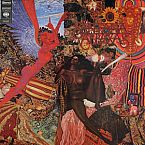Oye Como Vaby Santana

Songfacts®:
- Salsa legend Tito Puente wrote this song and recorded it in the early '50s. While Puente was very popular in the Latin community, Santana's cover became a hit and helped introduce Puente to a wider audience. On Santana's version of the song, everything, including the guitar wails and keyboards, follows the original music.
- The voice in the beginning says "sabor," which is Spanish for "flavor." >>Suggestion credit:
Jim - Oxnard, CA, for above 2 - The lyrics are entirely in Spanish and are four repetitions of this stanza:
Oye como va
Mi ritmo
Bueno pa gozar
Mulata
A "mulata" is a woman ("mulato" being a male) of Caucasian European and Black African descent. The correct translation of the word "oye" is listen. The translation of the lyrics is thus: "Listen to my rhythm, good for fun, mulata!!" >>Suggestion credit:
Alexei - Sao Paulo, Brazil - Gregg Rolie, who sang on many of Santana's early hits, took the lead vocals on this song. Rolie was a founding member and keyboard player for Santana; he joined Journey in 1973.
- "Oye Como Va" was released on the second Santana album, Abraxas, and issued as a single after "Black Magic Woman" (also a cover: that one was originally by Fleetwood Mac). The group made a huge splash at Woodstock in 1969 before they had released their first album, which came out two weeks later. Abraxas followed in 1970 and was their most successful, selling 5 million copies in America and hitting #1 in that country. Their next album, Santana III, also went to #1, but it would be another 29 years before they went back to the top spot, this time with their comeback album Supernatural.
-
- On their next album, Santana did another Tito Puente cover: "Para Los Rumberos."
- If you're wondering what "Oye Como Va" sounds like on steel drums, check out the 1973 cover by Amral's Trinidad Cavaliers. The Beastie Boys sampled this cover on their 1998 track "Body Movin'."
- In the early '00s, the original version by Tito Puente was used in a commercial television advertisement campaign for Nissan. >>Suggestion credit:
Bertrand - Paris, France
Comments: 31
- Ron Inbar from IsraelIn Santana's version I'm pretty sure the lyrics are "bueno para gozar, *Pilar*" (a girl's name).
- Jennifer Wallace from Charlotte NcThis is a great favorite of mine. I absolutely love the culture surrounding it. I’m an African American “old school” girl at heart and this song is in the top 10 of my playlist. A real “go to” sound for feeling good and partying! I’d love the chance to see Santana in Las Vegas this year.
- Sawyers from Cowen, Wv Love it. I thought I heard peligro means danger?
- Ed from Shanksville , Pa UsaIn 1969 I went to the Atlantic City Pop Fest, held at the race track. 90% of the 'Woodstock' performers played there. Santana was introduced as "The Santana Blues Band", which Carlos corrected to Santana. This was the favorite song of my now dead dog, Kimosabi!
- Richard from Carmel, InWXRT, a progressive FM station in Chicago, played rock music only at night in the early 1970’s. In the morning and during the day they would rent out their radio station to different ethnic groups who would have foreign language programming. This meant that if you went to bed listening to Hendrix, you could wake up the next day with some guying yelling in Spanish. When they made the switch to playing rock 24/7, the first song they chose to play was “Oye Cómo Va” by Santana. Someone had a sense of humor.
- Kilroy from Gdl, MexicoThe meaning of the phrase is: hey listen up or pay attention to my rhythm, it's good for PARTYING
- Jorge from Bronx, NyFirst tune of Santana that got my attention,,Soul Sacrifice,the rest is history,Many bands do well doing covers Santana did very well,I like both,Tito Puente and Santana versions.Spmetimes i wonder If Carlos Santana would do more,Love the Salsoul rhytmn
- Journeybear from Key West, FlThe phrasing leaves the lyrics open to interpretation. Since there is a pause before and after "mi ritmo," it could go with the phrase before or after it. Thus, the translation could be either "Hey, how is it going/ how are you doing? My rhythm is good to enjoy, mulata" or "Listen to my rhythm. It's good to enjoy, mulata."
Spanish allows for implied words; sentences are often constructed without a subject pronoun, for instance, because it is implied by the conjugation of the verb. So "como va" literally translates as "how goes," but it means "how goes it" or really "how is it going." But "oye como va mi ritmo" could also mean "hear how my rhythm is going" or "listen to my rhythm." Similarly, "bueno pa' gozar" translates literally as "good for to enjoy," or "good for enjoying," but using the implied words can mean "it is good for enjoying." Someone more familiar with Spanish will have to determine whether "gozar" means "have fun;" I keep seeing it translated as "enjoy." Splitting hairs perhaps, but who isn't around here? ;-) The goal is accuracy ... I think ...
I believe this dual meaning is part of the lyrics' charm, and part of what has made it such an enduring song, and bug hit for both Tito Puente and Santana.
I also believe that "mulata"is a way of saying "babe" or "girl" or "sweetie," a come-on kind of term of endearment or friendliness, much as is used "guantanamera" in the song of that name. It was probably inspired by someone Tito Puente saw in an audience. More than that need not be made of it. - Fred from Gresham, OrI'm not sure if any of you know this, but the song was written by Tito Puente, not Carlos Santana, and was a big hit by his band before Carlos recorded it. It was not pop or rock but jazz, so many are not familiar with that.
- Dane from Green Cove Springs Fla., FlMy favorite Santana song.I love all the changes especially.
- Bo from Fresno, CaI thought the last word in the phrase was "verdad" ... i don't hear multata???
- James from Nyc, NyOye,como va.....good grief people. I lived in Mexico for years and this is a common greating...
Oye should not be translated literally!
It means: YO! How's it going? or anything similar.
Que pasa...what's happening...etc. Que onda...Que tal...all basically the same meaning...just slang differences.
or:
Hello, how's it going? My RHYTHM is good for PARTYING, babe! Mullata was used because it sounded better than Chava, senorita bonita, etc.
- Darren from Little Rock, ArWait... I thought it was, "bueno pa' gosar. DUDAR." Which means like, "right?", "am I right?", "True?" or "No doubt!" Or maybe, "duda." "You doubt it?" Kind of like "verdad."
- Mikeyboy from New York, NyLOLz ppl gettin all turned around about the word "mulata" we can just avoid the higher mathematics of a Octoroon
.
.
.
.
okokok, I'm not that vicious: Octoroon -noun a person having one-eighth black ancestry; the offspring of a quadroon and a white. - M from E Brunswick, NjMulata. Does mean a female person of mixed race in basically a 50-50 ratio. There were other categories for different percentages such as Quadroon and Octaroon. This is all academic as the term mulata is actually quite offensive in its origin and shouldn't really be thrown around so cavalierly. Mulata derives directly from MULE-as in half horse and half donkey, not fully anything, impure, unnaturally mixed. Not the nicest term one could choose if you ask me.
- Steve from Chicago, IlThe English translations so far has been misleading as to theie incorrect translation of "Oye como va. Mi ritmo bueno pa' gozar, mulata." due to idiomatic expressions and the meaning of some words. Here it goes: "Hey, how's it going? My rhythm is good for partying, babe."
Simple and accurate.
Steve H., Chicago, IL - Tom from Marble Falls, ArI put the phrase in the Google translator. It could translate the second line, "Bueno pa' gozar, Mulata" but it couldn't translate, "Oye como va, mi ritmo" completely, so I separated each words by commas. It came up with "Hey! like you my pace, well to enjoy, Mulata." Now, I realize this is just word for word translation and it loses the entire meaning, but it's still interesting the see the word structure.
- Lyn from Chagrin Falls, OhThe inconsistencies in translating 'mulata' are due to cultural influences. The literal & legal translation is a black & caucasion mixed race woman (-ta is feminine vs. -to masculine). Culturally, mulatas are generally considered to be beautiful, hence the translation of being a 'hot chick'. In the creole culture during the slave owning period mulatas were usually treated as mistresses & were given beautiful gowns & jewelry. There were even cotillions where men brought their mulata women to show off their beauty. Sadly they were still slaves as US slave laws dictated that any child of a slave was still a slave no matter the racial mix.
So I think Carlos is inviting a lovely mulata to come enjoy his music! - Maria from London, United Kingdomi have no idea where you got 'dark skinned' from, i mean i dont even speak the language (yet !) and even i knew that it was 'mixed race'
- Lost from Crawfordsville, United KingdomGreat song but translation isnt that simple you can try to translate spanish to english word for word or text but you loose the feeling and emotion behind the entiresong why try listen to the song and enjoy
- Jack from Northern, VaWhat is Ta-Taneicia talking about? I see no reference to any prostitutes in any of these posts. nd unless you are living in a community where you know all the slang, don't be so quick to be dogmatic about it. Shortie. Hottie. Mulata! smooooch. This is one Baaaaaaad song, and so lets just party and dance! Si, Bueno pa'gozar!
- Ta-taneicia from Statesboro, Gafirst, mulata is not slang for anything. it is an actual, legally recognized racial classification that describes a female who is, for the most part, of equal causcasian european and negro african descent, whether of first or subsequent generations. i say "for the most part" because in some countries, mulatoes who are not exactly 50-50, but have that "mulata" look, are legally classified as mulata. second, that being said, mulata does not mean prostitute and as a mulata i am HIGHLY offended that this slanderous definition has been posted here as an official fact. third, and in that same vein, mulata does not now days mean a "hottie" or "hot chick". there are some mulatas who are not hot by anyone's definition, but they are still bi-racial and therefore mulatas. and fourth and finally, a mulata also does not mean dark skinned. jennifer beals (flashdance) is a mulata and i challenge anyone to refer to her as dark skinned. but she is still bi-racial, and therefore a mulata.
- Jimi from Uvalde, TxA Mulatta is not a prostitute! A Mulatta is a woman of mixed African and White or Native blood. In many Hispanic families it's a term of endearment. "Oye como vay! Que ritmo! Bueno pa gosar, Mulatta." =
"Listen how it goes (the beat). What rhythm! (It's) good for/to enjoy(ment), Mulatta! - Cj from Oakland, CaIn October 1989, Carlos Santana participated in an event "Historia de la Evolucion de Musica Afro-Cubana" - 'Story of the Evolution of Afro-Cuban Music. Before the all-star group of musicians led by The Machete Ensemble performed Oye Como Va, percussionist/ethnomusicologist John Santos explained to the audience that "Oye Como Va", although attributed to Tito Puente, was actually a rewrite of a tune called "Chanchillo", composed & recorded in the 1930s by the brothers Orestes and Israel "Cachao" Lopez who were innovators in the Mambo genre. The classicly-trained polyrhythmic bass-thumping octogenerian was also featured SFJF event, and the group went on to perform the rockingest, cintura-shaking version of Oy Como Va ever heard before or since.
Also on stage was the amazing Armando Peraza on bongos who performed with Cal Tjader & Mongo Santamaria; and Cuban timbalero Orestes Vilato the counterpart to Ray Barretto's group whose 'Boogalu'-flavored album "Acid" of 1967 was another Santana influence; Armando and Orestes would eventually perform with Santana for a number of years.
Also present at the concert was actor Andy Garcia, in town during the wrap of 'Godfather III' and who befriended Sr. Cacaho Lopez, bringing the composer and 'godfather' of the original 'Oye Como Va' to a new level of public appreciation through a film 'Como un Ritmo no Hay Dos', and a recent Grammy-winning album, "¡Ahora Si!".
Although the original inspiration 'Oye Como Va' is a very rare listen, listeners can hear a rerecorded traditional version of "Chanchillo" as a title cut for Cuban pianist Ruben Gonzalez of the Buena Vista Social Club fame, produced by blues guitarist Ry Cooder, and released in 2000.
- Cj from Oakland, CaIn October 1989, Carlos Santana participated in an event "Historia de la Evolucion de Musica Afro-Cubana" - 'Story of the Evolution of Afro-Cuban Music. Before the all-star group of musicians performed Oye Como Va, percussionist/ethnomusicologies explained to the audience that "Oye Como Va", although attributed to Tito Puente, was actually a rewrite of a tune called "Chanchillo", composed & recorded in the 1930s by the brothers Orestes and Israel "Cachao" Lopez who were innovators in the Mambo genre. The classicly-trained polyrhythmic octogenerian was also featured SFJF event, and the group went on to perform the rockingest, cintura-shaking version of Oy Como Va ever heard before or since.
Also on stage was the amazing Armando Peraza on bongos who performed with Cal Tjader & Mongo Santamaria; and Cuban timbalero Orestes Vilato the counterpart to Ray Barretto's group whose 'Boogalu'-flavored album "Acid" of 1967 was another Santana influence; Armando and Orestes would eventually perform with Santana for a number of years.
Also present at the concert was actor Andy Garcia, in town during the wrap of 'Godfather III' and who befriended Sr. Cacaho Lopez, bringing the composer and 'godfather' of the original 'Oye Como Va' to a new level of public appreciation through a film 'Como un Ritmo no Hay Dos', and a recent Grammy-winning album, "¡Ahora Si!".
Although the original inspiration 'Oye Como Va' is a very rare listen, listeners can hear a rerecorded traditional version of "Chanchillo" as a title cut for Cuban pianist Ruben Gonzalez of the Buena Vista Social Club fame, produced by blues guitarist Ry Cooder, and released in 2000. - cjleander
- Erica from Toronto, CanadaThe translations mentioned so far are INCORRECT.
If you were to translate the song into English word for word it would be like follows: Hi how are you (oye como va) my rhythm (mi ritmo) is good for partying (bueno pa' gozar) my dark skinned female(mulata). Although nowadays mulata is just slang for hottie or a hot chick. So basically: Hey, my rythem/song is good for partying, my hottie. - Allan from Vanderhoof, CanadaRandy Bachman tells a great story on Every Story Tells A Song about playing Oye Como Va in a Vancouver nightclub while trying to figure out some way to get through to the end of the set.
The song ended up being a Spanish-Ukrainian cross, according to him, with lines like "Oye Como Va, perogie".
Then he came up with an idea for another song on thr spot ? Takin' Care of Business.
Great CD for anyone who likes to get the story behind the song, and Bachman is a natural-born storyteller. - Johnny from Los Angeles, CaI like the backround percussion.
- Jemma from Camborne, EnglandCheers to Juan J Medina... I was trying to find out what the words meant!!! So, cheers again dude!
- Juan J Medina from San Diego, CaThe main phrase in the song says "Oye Como Va, Mi Ritmo, Bueno Pa Gozar, Mulata", Which translates to: "Listen How It Goes, My Rhythm, Good to play with,(Mulata - An offspring of a Black and a White parent, In this case, Of Puerto Rican Decent.)
- Marc from Florence, KyThe title and chorus of the song loosely translates to "Listen How it Goes"
More Songfacts:
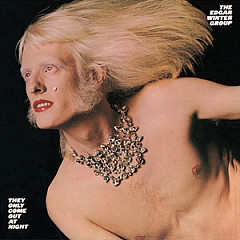
FrankensteinEdgar Winter
"Frankenstein" by Edgar Winter got its name because it was a monster to edit; they pieced it together like Frankenstein's monster.
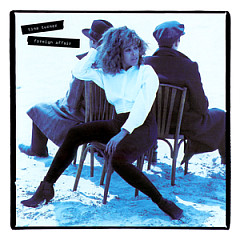
The BestTina Turner
"The Best" by Tina Turner was originally recorded by Bonnie Tyler; Turner's hit version added a bridge and a saxophone solo by Edgar Winter.
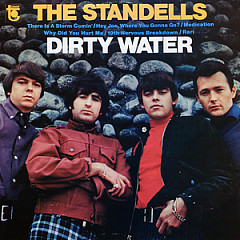
Dirty WaterThe Standells
"Dirty Water" became a Boston sports anthem in the '00s, but it was written by a guy from California after almost getting mugged on a visit to the city.
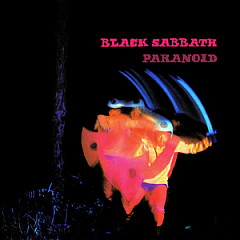
ParanoidBlack Sabbath
"Paranoid" reflects a feeling Black Sabbath bass player Geezer Butler often felt after using drugs.
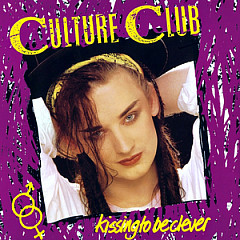
Do You Really Want To Hurt Me?Culture Club
"Do You Really Want To Hurt Me?" was written by Boy George about his relationship with Culture Club's drummer Jon Moss.

S&MRihanna
Rihanna claims that "S&M" is about her love/hate relationship with the media. Apparently her paparazzi are using whips and chains.
Editor's Picks

Crystal WatersSongwriter Interviews
Waters tells the "Gypsy Woman" story, shares some of her songwriting insights, and explains how Dennis Rodman ended up on one of her songs.

AdeleFact or Fiction
Despite her reticent personality, Adele's life and music are filled with intrigue. See if you can spot the true tales.

Scott Gorham of Thin Lizzy and Black Star RidersSongwriter Interviews
Writing with Phil Lynott, Scott saw their ill-fated frontman move to a darker place in his life and lyrics.

Grateful Dead CharactersMusic Quiz
Many unusual folks appear in Grateful Dead songs. Can you identify them?
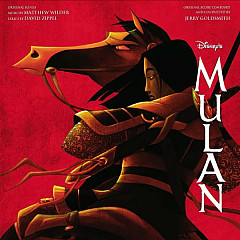
Part of Their World: The Stories and Songs of 13 Disney PrincessesSong Writing
From "Some Day My Prince Will Come" to "Let It Go" - how Disney princess songs (and the women who sing them) have evolved.

